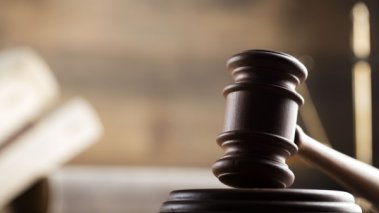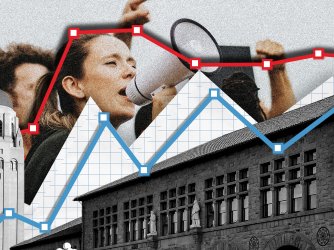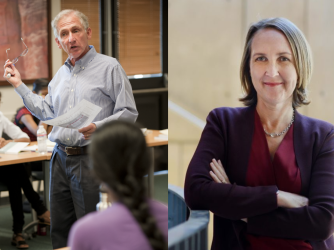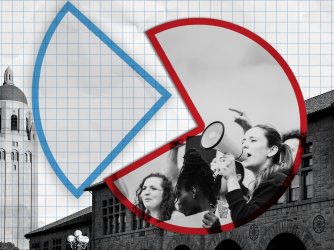Table of Contents
ABA’s recommendations for campus sexual misconduct cases encourage the worst of the status quo

I often get asked — by students working toward policy reform, or by reporters shining a light on the lack of procedural fairness at colleges nationwide — what one thing I would change about campus disciplinary proceedings, if I could. I nearly always say I would get rid of the single-investigator model, in which just one or two people complete the entire investigation and adjudicatory process on their own through private meetings with relevant individuals. The American Bar Association Commission on Domestic & Sexual Violence recently released a document titled “Recommendations for Improving Campus Student Conduct Processes for Gender-Based Violence,” which advises schools to double down on the single-investigator model.
Due process advocates and readers of FIRE’s Spotlight on Due Process 2019–2020 report know that universities across the country are overwhelmingly failing to guarantee procedural safeguards to students accused of misconduct. The safeguards the report focuses on — elements like a presumption of innocence, notice of allegations, and an opportunity to ask questions of an accuser — are all critically important to ensuring fundamental fairness in disciplinary proceedings. But because the single-investigator model exacerbates and hides any other shortcomings in the process, the lack of a live hearing is particularly harmful.
Here’s how the ABA describes the single-investigator model, which the document calls an “Investigative Model”:
A method of investigation and fact-finding where skilled professional investigators gather evidence and interview parties and witnesses in separate, individual meetings, then write an investigative report where they review the evidence, make factual findings and determine whether there has been a policy violation. The findings then go to an IHE decision-maker for determination of sanctions, if any.
Many institutions already use this model. While the ABA foresees that “at most two investigators” will be involved in a case, very often, it is put into practice by just one investigator. That means that just one person has nearly complete control over the case, including who to interview, what questions to ask, what evidence to consider and to what degree it should be relied on, and, ultimately, whether the respondent is guilty. There are no checks and balances. Even the most well-meaning person sometimes makes mistakes, whether it’s misreading a document, or failing to see something in a video, or (as I’ve seen happen) forgetting time zones exist and therefore miscalculating the timeline of a series of texts. We are all human. And we all may have unconscious biases that can sway us, particularly in close cases, to find one way or another.
The risk that error or bias will be a determining factor in a case is at its absolute highest when just one person has as much control over a case as the single investigator has in this model. Of course, that error or bias could result in a guilty student being found not guilty just as easily as it could result in an innocent student being punished. The model is bad for all parties and for the entire campus community.
In contrast, a live hearing model has many elements of checks and balances. A live hearing model is what is portrayed in any television or movie courtroom scene, with the parties taking turns presenting evidence and testimony in front of a panel of fact-finders. All parties can see everything that’s happening in front of the fact-finders: all the evidence being presented and the questions being asked. They can point things out and do their best to ensure fact-finders are seeing all the evidence clearly. They can call out bias where they see it. The same can happen in a discussion among fact-finders as they deliberate; panel members can ensure that one member’s error or bias does not determine the outcome of the case. And, unlike in the single-investigator model, live hearings allow for cross-examination of witnesses and the parties, a step that multiple federal appellate courts have held is necessary for due process in at least some cases.
Moreover, because of the sheer number of witnesses to procedural failures or other problems that might happen in a live hearing, aggrieved students — whether accuser or accused — will be better able to demonstrate that their rights were violated on appeal or, if necessary, in court. In a single-investigator system, they might not even become aware of such failures, because so much happens privately between just the investigator and one other person.
Troublingly, the ABA isn’t the first to recommend the single-investigator model. In 2014, the White House Task Force to Protect Students from Sexual Assault similarly made this recommendation. If enacted as proposed, forthcoming Title IX regulations published last year would force colleges to reverse course and offer respondents live hearings with opportunities for cross-examination through attorneys. This would be a huge step towards fundamental fairness in campus disciplinary systems, and FIRE hopes to see these proposed regulations implemented soon.
As an alternative, ABA also recommends the “Investigation + Deliberative Panel Hybrid (“IDP Hybrid”) Model”:
This model combines the Investigative Model with a deliberative panel so that professional investigators make factual findings as in the Investigative Model, but then a deliberative panel reviews the investigation report and the investigators appear before the panel to answer questions before the panel makes a final decision. The parties may also opt to appear before the panel to make statements. The deliberative panel finds the facts, determines responsibility for violation of IHE student conduct requirements, and, in some instances, recommends or issues sanctions based on the report and the testimony.
Though it may appear to incorporate elements of a live hearing model, the hybrid model lacks central features of a true live hearing model and creates an additional risk present in neither the single-investigator model nor a live hearing model.
The “deliberative panel” portion of this process starts after a prejudgment by the investigator. If that judgment is that the accused student committed the alleged wrongful behavior, any subsequent hearing-type procedure will already be tainted by a presumption of guilt. Additionally, as with the single-investigator model, the majority of evidence-presenting and testimony happens in private. Parties may “make statements,” but it is clear from the framing, and from the ABA’s distinction between this and a “Hearing Model,” that this is not meant to be an opportunity for parties to present evidence to the panel and ask questions. Instead, the panel bases its decision largely on the investigation report and the testimony of the investigator or investigators.
Anyone who’s played Telephone or Whisper Down the Lane knows how quickly messages can get distorted, or even completely transformed, when passed through an intermediary. This is the additional risk created by the hybrid model. Those making the ultimate determination of whether a student will be found responsible and punished aren’t looking at the evidence or hearing testimony directly — they are receiving someone else’s impression of it. This impression could easily be different from what the panel members’ own would be, and innumerable nuances can be lost in translation. Administrators should maintain policies that give fact-finders the absolute best shot possible at figuring out what really happened where the facts are contested, and that means having fact-finders see and hear all the evidence, including testimony, directly.
The ABA explained that it recommends these models because they are “more affordable” and less traumatic to complainants, and because “post-proceeding psycho-social treatment and education” of students found guilty will go more smoothly if the institution “avoid[s] the adversarial structure.” First, as FIRE has noted on several occasions, including in the Spotlight on Due Process report, a case in which the facts are contested and the respondent can be suspended or expelled if his side of the story is not accepted is necessarily adversarial. One side wins (administratively speaking — really, there are no winners where there’s sexual misconduct), and the other side loses. Calling the process “educational” does nothing to diminish that fact.
Second, while single-investigator models are too common, many schools have successfully included live hearings in their campus misconduct cases without going bankrupt. Additionally, in light of courts increasingly recognizing the essentiality of various procedural safeguards in disciplinary proceedings, institutions that take shortcuts to save costs now may be paying much more in litigation costs down the road.
The purpose of Title IX is to ensure students are not denied access to their education because of sex, including because of misconduct aimed at them because of their sex. Accordingly, it makes sense to minimize additional trauma where possible. But efforts to make complainants comfortable cannot take priority over ensuring that accused students are treated fairly and have an opportunity to demonstrate their side of the story to fact-finders. Further, although repeating testimony to a panel of fact-finders may be more difficult than relaying it to a single investigator in private, the outcome for all students will be better when the adjudicatory system is less vulnerable to error and bias — and that means a live hearing model with a panel of fact-finders.
FIRE hopes to see a shift toward live hearings in disciplinary proceedings. With new Title IX regulations on the horizon, that shift might be imminent in sexual misconduct cases, but for the reasons discussed above, live hearings are paramount in all cases involving allegations of serious misconduct. As always, FIRE is happy to work with administrators or students who want to ensure fair policies and procedures are implemented at their institutions. Email us at dueprocess@thefire.org.
Recent Articles
FIRE’s award-winning Newsdesk covers the free speech news you need to stay informed.

A third of Stanford students say using violence to silence speech can be acceptable

Stanford president and provost cheer free expression in open letter to incoming class

FIRE survey shows Judge Duncan shoutdown had ‘chilling effect’ on Stanford students
